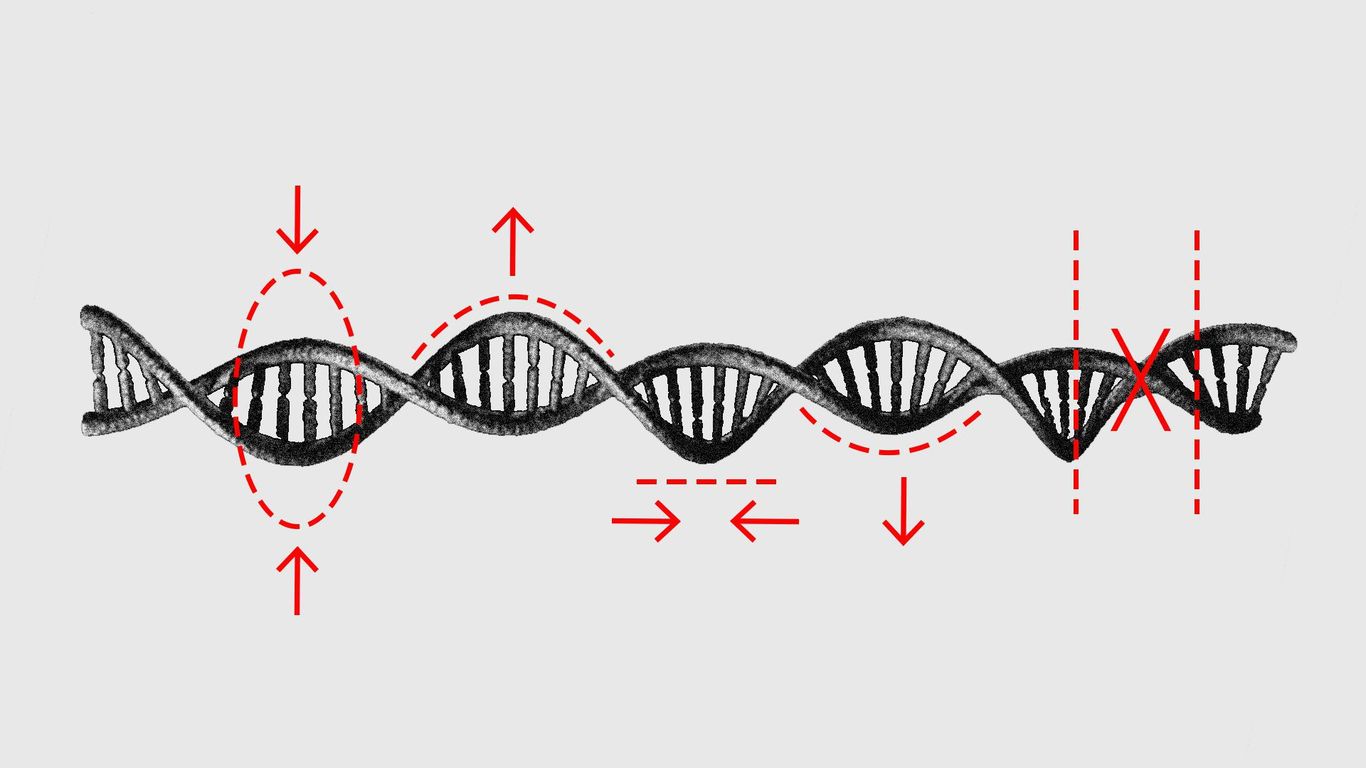
The gene editing system CRISPR-Cas9 can be injected into the blood and directed to the liver to treat patients with a rare condition, according to a recent study.
Why it matters: The ability to edit genes directly in a patient's body expands the list of possible diseases and conditions researchers can try to target with CRISPR-based therapies.
Driving the news: Preliminary but promising results from a small trial in six people indicate a one-time CRISPR-Cas9 treatment led to a decrease in the misfolded protein that causes the condition transthyretin amyloidosis (ATTR).
- ATTR occurs when the abnormal protein is produced in the liver and then builds up on tissues, primarily nerves and the heart.
- The levels of protein dropped an average of 87% in three people who received a higher dose of the therapy in a Phase I trial in the UK and New Zealand, researchers at Intellia Therapeutics and Regeneron reported last weekend in The New England Journal of Medicine.
- Existing ATTR treatments can reduce protein by 80% but have to be administered regularly.
The trial results don't yet indicate whether symptoms of the disease are alleviated.
- Researchers will "intensively follow" the trial participants for at least two years to monitor them for any side effects from the treatment, says Intellia CEO John Leonard.
The big picture: CRISPR therapies are being developed and studied for a range of diseases and conditions.
- One approach, in which cells are removed, edited and put back into the body, is being studied to treat people with sickle cell anemia but it is expensive and involves bone marrow transplants.
- Another uses viruses or virus-like particles to deliver the editing machinery into the body and is being investigated to treat a hereditary blindness disorder.
- Similar to some COVID-19 vaccines, the new study uses lipid nanoparticles to deliver mRNA instructions for a person's cell to produce the enzyme that cuts the DNA so the gene is inactivated and the abnormal protein is no longer produced. Unlike a virus vector, the mRNA doesn't stay in the body.
But delivering the gene editing system to some cells without it being degraded remains a challenge for the field.
- In the ATTR trial, the target was cells in the liver, which acts as a filter and readily picks up the nanoparticles, whereas other cells, for example, in the brain, present a difficult barrier to foreign materials, Leonard says.
- Ideally, a solution can be developed that has the virus' ability to more easily enter cells and the nanoparticles' short-lasting nature, he says.
What to watch: Leonard says in addition to continuing to study the AATR therapy in pursuit of FDA approval, Intellia is looking at whether the mRNA approach could be applied to treat sickle cell anemia and eliminate the need for bone marrow transplants.
- They're also interested in whether the system can be used to produce proteins lacking in diseases like hemophilia and for alpha-1 antitrypsin deficiency that underlies inherited emphysema.
Go deeper: CRISPR co-discoverer on the gene editor's pandemic push (Axios)
Article From & Read More ( CRISPR milestone pushes gene editing toward its promise - Axios )https://ift.tt/3AoJwYw
Science
No comments:
Post a Comment